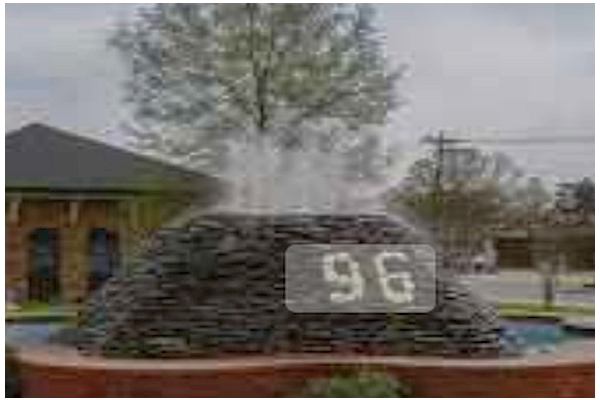June 1, 2024 at 1:51 p.m.
This is another in the series of articles from the SAR & DAR leading up to America's 250th birthday in 2026.
The Carolinas were an important battleground during the American Revolution. Most are familiar with some of the major battles including Kings Mountain and, of course, preceding that, one local battle, the Battle of Ramsour's Mill in Lincoln County was one of multiple smaller skirmishes. The longest battle of the war for independence was fought at Ninety-Six, South Carolina, during the Summer following Ramsour's Mill and Kings Mountain.
Jennifer Baker of the Vesuvius Furnace Chapter of the DAR, tells the history of that event.
On May 22nd, 1781, Major General Nathanael Greene and approximately 1,500 Patriots attempted an attack on the critical village of Ninety-Six in the South Carolina backcountry.
Greene’s army arrived on the outskirts of the town and found that it was defended by 550 Loyalists under Lt. Col. John H. Cruger. After surveying the area, Greene found that the town’s strongest defense was a star-shaped fort. After failing to seize the fortified settlement, they began a siege of it, which lasted until their retreat on June 18th, making it the longest battle of the Revolutionary War.
Ninety-Six, on the Saluda River, was critical for the defense of the northwest portion of the state and the most strategically important position in South Carolina after Camden. The Patriots lay siege to the city beginning on May 22nd, using siege lines—trenches and structures built for the use of the besieging army and its artillery—which were designed by the Continental Army’s noted engineering talent Thaddeus Kosciusko and are considered the best example of their kind in the United States.
When the Patriots learned that British Lieutenant Colonel Francis Rawdon was on his way to reinforce the Loyalists, they began a preemptory assault led by Major General Greene on June 18th. Unable to breach the defenses at Ninety-Six’s Star Fort, the Patriots were forced to retreat, with 185 Patriot casualties compared to just 75 of the Loyalist defenders.
Greene withdrew on June 19th. When his troops retreated from the field ending the siege, the Patriots fell back to the High Hills of the Santee below Camden.
The Patriot forces outside the fort greatly outnumbered the British – 1500 Patriots to the approximately 550 inside the fort. Despite being outnumbered, this fort was too much for the Patriots: with 147 total casualties--57 killed, 70 wounded and another 20 missing or captured. On the British side, there were 85 casualties consisting of 27 killed and 58 wounded. The British remained entrenched at the fort until they left of their own accord.
Although Greene failed to remove the British from Ninety-Six, he and Brigadier General Francis Marion of the South Carolina militia were remarkably successful at taking back other British outposts, capturing five others before their attempt at Ninety-Six. By the time the time the British left Ninety-Six on July 1st, 1781, it was the last Loyalist fort in South Carolina.
When you walk onto the battlefield today, the siege trenches are partially reconstructed, but the Star Fort is the original. Construction of the Star Fort started in December 1780 and it was finished in early 1781; built by Loyalist soldiers (loyal to the King of England) & slaves from nearby farms and plantations. It wasn't a very popular design because it was hard to build, and couldn't hold many troops, but Loyalist engineer Lt. Henry Haldane decided that an eight-point star fort would be better for the site than a traditional square fort – and the failure of the patriot forces to take control of the fort reinforced his choice. The star shape allowed muskets and cannon fire in all directions.
The Star Fort had a gun battery located near the bottom center point in the photo. The long mound of dirt in the center of the picture is called a Traverse and was built during the Patriot siege of the Star Fort (May 22- June 18, 1781). It was to be used as a second line of defense in case the Patriots breeched the Star Fort walls. The walls were originally about 14 feet high with sandbags around the top giving it a height of about 17 feet during the battle. The walls are weatherworn in places but are original. No major reconstruction has been done to the fort.
If you would like to visit this Revolutionary War site, it's about a two-and-a-half hour drive from Lincolnton--approximately 50 miles west of Columbia and about 150 miles south of Spartanburg.
 This year's celebration of the 1780 Battle of Ramsour's Mill, by the way, will be the weekend of June 22nd & 23rd at the battleground near Lincolnton High School Stadium.
This year's celebration of the 1780 Battle of Ramsour's Mill, by the way, will be the weekend of June 22nd & 23rd at the battleground near Lincolnton High School Stadium.
Following a reception for SAR & DAR members at the Hampton Inn from 6 - 8 PM Friday June 21st, public events will be Saturday (June 22nd) and Sunday (June 23rd). The "Thunder Over Carolina" drama that has become a tradition related to Ramsour's Mill won't be performed this year. Members of the cast will instead conduct a 'ghost walk' with commentary telling about the battle on Friday evening beginning at 6 PM. It will be free to attend.





Comments:
You must login to comment.